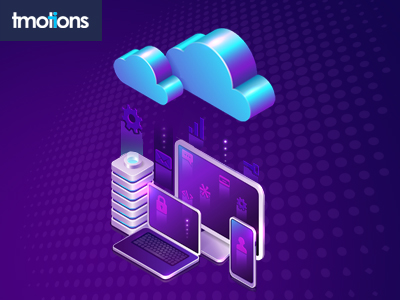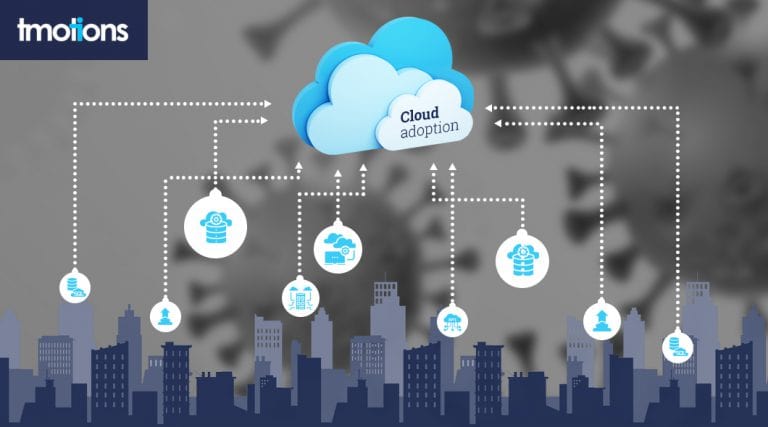Cloud adoption has become essential in the world of remote working and online commerce, but many companies are not achieving all the expected rewards from cloud migration. We share how to successfully adopt new cloud technologies to achieve your business goals.
Historically, from Icarus to the Wright brothers, humans have been obsessed with walking and flying among the clouds. It is perhaps apt then that in the technology world today, the word “cloud” has become the symbol of progress and an antidote to the chaos of modern business.
In recent times and with the onset of COVID, businesses of all sizes have increasingly turned to cloud migration to improve availability and efficiency. Cloud adoption has become essential.
A “cloud first” strategy is now recognized as key to surviving in an era of socially distanced remote work, online commerce, and a more challenging business environment generally.
Read More: Power Up your B2B eCommerce with Search | 5 Things You Need To Succeed as a Grocer in 2023 and Beyond!

Indeed, companies are seeing rewards for their cloud investments, but they’re encountering pitfalls, too.
It has been found that most adopters have not fully achieved their expected outcomes, while leaders’ confidence in the migration is relatively low.
A Recent Survey Done By Accenture Points Out That:
- Full achievement through cloud has not significantly increased, basically holding steady at 37%.
- Even high adopters struggle, with more than half (52%) reporting they have failed to achieve the expected value from their cloud initiatives.
- The percentage who say they are very satisfied with the cloud outcomes achieved to date showed little change: 45% in 2020 (vs. 44% in 2018).
- Further, only 29% are completely confident that their organisation’s cloud migration initiatives will deliver the expected value at the expected time.
Read More: How Food Went High Tech | Five Trends Shaping Grocery Retail in 2023 And Beyond | Microsoft Dynamics 365
Achieving Expectations
Becoming “cloud first” is a vital component to digital transformation but technology alone does not enable businesses to extract all the benefits from cloud strategy. Cloud infrastructure services help to solve business challenges, data storage, service management & hosting solutions. We offer cloud app development services to help companies become more agile, our developers gained expertise providing full cycle cloud adoption services.
From adopting fundamentally new ways of working, shifting to new operating models and developing new skills, the list is considerable when successful cloud adoption and value is being considered.
Three key areas companies should address are:
1. Business Value Focus:
Develop an optimal cloud strategy anchored to comprehensive economic business cases to identify revenue upside and cost-efficiency opportunities, while aligning goals and putting company leaders on the same page.
2. Workforce and Culture Change:
Implement talent readiness programs and new operating models to evolve culture, transformin. How people work and what work they do to meet rapidly changing needs.
3. Data and AI:
Unlock industry- and function-specific data insights and intelligence trapped in legacy systems with the power of cloud data models.
The cloud adoption framework, powered by Azure, helps businesses speed up their journey towards digital transformation. And achieve their business goals.

Each stage of the framework focuses on specific aspects of the cloud journey, for each organisation to address internally.
Here is an Overview of Each Stage:
- Strategy: Businesses need to start with understanding the underlying motivation to adopt new cloud technologies. Considering business and financial justifications, and aligning those to business goals and expected outcomes.
- Plan: Creating a cloud adoption roadmap based on inventory of the current digital landscape is vital with prioritised workloads. And a suitable migration strategy for business impact.
- Ready: Prepare people, business processes, and IT environments for the change, based on a prioritised and agreed cloud adoption plan. Leveraging landing zones and replicable mechanisms to enable agility with proper governance and controls.
- Adopt: This stage is about technology implementation based on the migration plan and decided configuration for the cloud infrastructure.
- Govern: This stage involves reviewing the existing IT policies and making necessary amends to include cloud infrastructure. As the tech landscape evolves, so does the IT policies needed to keep pace with it to mitigate risk.
- Manage: Continuous monitoring to ensure optimisation to enable cloud to deliver on the business expectations and investment.
Every informed business has similar goals, namely to be resilient in uncertain times. And enhance ROI with an increase in trust. Cloud Computing solutions offers flexibility to businesses. The world’s largest companies have moved their data to the cloud after understanding the reliability and security of its infrastructure.
Being a cloud solution provider, we help enterprises to be able to capitalise on opportunities for reinvention. And growth as soon as they arise.
With speed and scalability provided by the cloud, businesses can pivot from “keep the lights on” operations. Freeing up their budgets and their teams’ time to fundamentally rethink. How the business operates and how it creates value.
If you want to learn more, drop us a note at : info@tmotions.com
Read More: How To Enhance Your eCommerce Store for Better Customer Engagement | NopCommerce vs Magento









